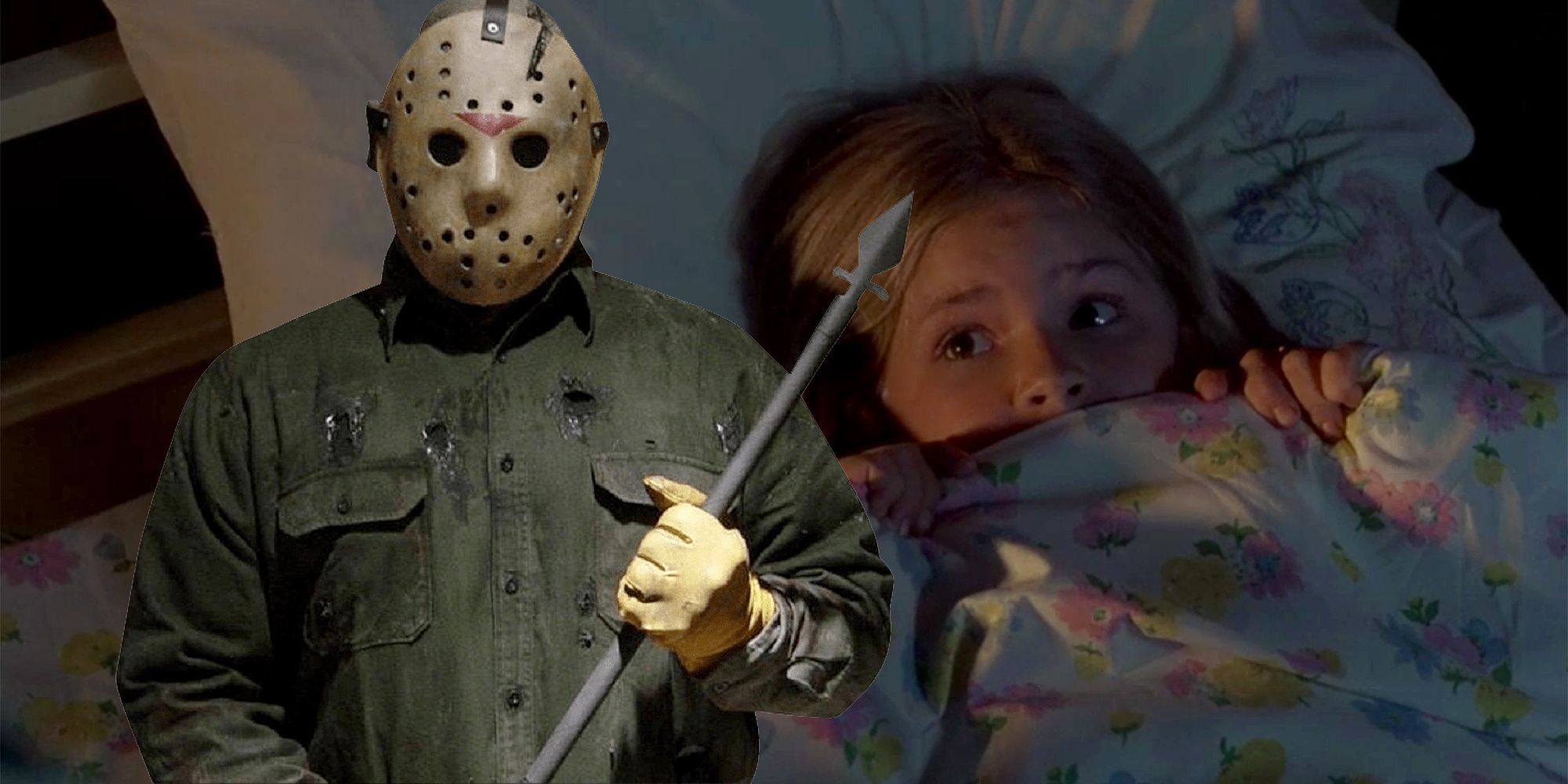
Throughout the Friday the 13th films, Jason Voorhees has countless victims, but there are two exceptions to his carnage: he never kills children or animals. The Friday the 13th franchise was a surprising success, spawning 12 films in total – including a remake and a crossover with A Nightmare on Elm Street. Although the original film followed vengeful mother Pamela Voorhees (Betsy Palmer) on her bloodthirsty quest against those she blamed for her son’s death, the rest of the films focused on Jason himself, in varying stages of life.
Jason has gone through several iterations over the course of the franchise, slaughtering the teenagers of Camp Crystal Lake as punishment for his own death as a child and his mother’s murder. His strength, immortality, and preferred choice of victims have resulted in Jason being grouped with antagonists like Michael Myers and Freddy Krueger. But while his high body count is standard for a slasher movie villain, Jason differs from the others in one significant aspect—he refuses to harm those that he deems as “innocent.”
Despite being presented with several opportunities, Jason has never killed a child or an animal, usually ignoring any cats or dogs he encounters. Kane Hodder, who played Jason in four of the films, has stated that hurting an animal is a line that Jason will not cross. In comparison, Michael Myers has no qualms about killing animals, and although Freddy Krueger exists primarily in the dream world, limiting his interactions with creatures outside of it, he derives happiness from harming the helpless and innocent. Jason, a product of his mother’s puritan beliefs and his own tragic death, believes that his murder sprees are the only way to please her and avenge them both; he doesn’t get joy out of his kills.

Jason primarily targets the teenage counselors of Camp Crystal Lake, but, as seen in Friday the 13th Part VI: Jason Lives, has no intention of harming the children left in their care. Given that Jason died as a child due to negligent adults, it stands to reason that he would feel sympathetic to any child that he comes across, and be understanding of their position in the world. Unlike adults—particularly sexually active ones—Jason sees children as harmless and innocent and would be unwilling to kill those that can’t protect themselves.
This lingering aspect of Jason’s humanity has remained throughout all the movies, even when he’s in the presence of children who wish him harm. One of the few recurring characters in the Friday the 13th films, Tommy Jarvis is often considered to be Jason’s nemesis, managing to defeat him twice and live. When Tommy was first introduced in Friday the 13th: The Final Chapter, he was a young boy, and Jason ignored him in favor of attacking the promiscuous, drunken teenagers partying in the house next door. Although Tommy killed him with his own machete, Jason expressed little desire in harming the child in return. It wasn’t until Jason Lives that the now-adult Tommy became a target for Jason, who pursued him to the waters of Camp Crystal Lake – leaving a cabin full of children unharmed.
Over the years, the Friday the 13th franchise has undergone several changes, but Jason Voorhees’ refusal to harm children or animals has remained consistent. While it’s uncommon for slasher villains to have a moral code, Jason’s kill rule suggests that he has his own, twisted understanding of right and wrong. Unlike his fellow antagonists, Jason was given a backstory that made him more sympathetic to audiences and provided motivation for his crimes, allowing the films to occasionally showcase the remaining aspects of his humanity. Although Jason is one of horror’s most iconic murderers, his kill rule is what separates him from his peers, making him even more memorable.











































































